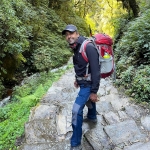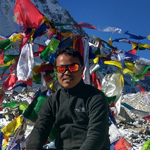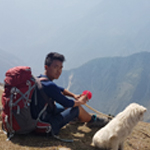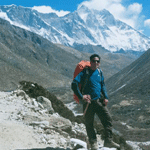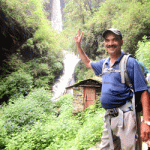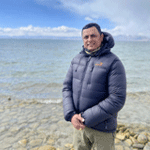What is Altitude Sickness?
Altitude sickness is a collection of nonspecific symptoms acquired at high altitude. It covers a spectrum of illnesses from acute mountain sickness that resembles a bad case of the “flu” or a “hangover,” swelling of the brain (high altitude cerebral edema) or accumulation of fluid in the lungs (high altitude pulmonary edema). It is hard to determine who will be affected by altitude sickness, as there are no specific factors that correlate with a person’s susceptibility to altitude illness. However the rate of ascent, altitude attained and degree of physical activity are all contributing factors to the onset and severity of the illness
What causes the symptoms of altitude sickness?
Altitude Sickness Symptoms associated with altitude sickness result from the body’s inability to adjust to lower levels of oxygen in the blood. It is the pathological effect of high altitude (commonly above 2,500 m or 8,000 ft) on humans caused by exposure to low partial pressure of oxygen at high altitude. The percentage of oxygen in air remains at altitude, but the density or number of oxygen molecules in each breath decreases as altitude increases. At 3,500 m (12,000 ft) there are roughly 40% fewer oxygen molecules per breath.
Acclimatization
The main cause of altitude sickness is going too high too fast. Over time your body will adapt to the lower oxygen levels at a specific altitude. This adaptation is called acclimatization and generally takes one or two day when you are above 3000 M altitude. In order to increase oxygen levels in the blood, you body responds by increased the frequency and depth of your breathing. It is possible to prevent altitude sickness by ascending slowly and allowing your body to adjust as you are going higher. Watching for early signs and symptoms of high altitude illness and responding quickly by descending to a lower altitude can usually avoid serious complications of high altitude disease.
Acute Mountain Sickness (AMS)
Acute Mountain Sickness (AMS) is common at high altitudes and occurs in over 50% of individuals who live at a low altitude and sleep at altitudes about 3,000 m (10,000 ft). The severity of AMS is variable. Symptoms usually begin within 6 to 12 hours of arrival at altitudes above 2,500 m (8,000 ft), but may begin as soon as one hour or as long as 24 hours after arriving. Symptoms generally begin to decrease in severity by the third day.
AMS symptoms
The symptoms of AMS are similar to a hangover and include: headache, fatigue, lightheadedness, lack of appetite, difficulty sleeping (because of waking frequently from Cheyne-Stokes breathing), nausea with occasional vomiting and decreased co-ordination. Symptoms may be mild or severe and are often the worst after the first night at altitude and improve within a day if you do not ascend to a higher altitude. However symptoms may return as you travel higher.
As long as symptoms are mild, climbers can usually continue to climb at a moderate rate. As symptoms become more severe, you should NOT climb higher until your symptoms have resolved (usually within 24 hours) and you should consider descent to reverse the symptoms. Even a descent of 300 m (1,000 ft) will significantly improve symptoms. You should rest and avoid drinking alcohol and taking sedatives or sleeping pills as you recover. This may mean that you, as well as your fellow climbers, will be delayed or unable to climb as high or as far as you had hoped. However, climbing higher while you have symptoms of AMS can lead to serious complications. All symptoms of AMS should be communicated to the head guide who will make a decision about whether or not to evacuate the climber suffering from AMS.
High Altitude Pulmonary Edema (HAPE)
HAPE is a potentially fatal condition in which lung capillaries leak and fluid accumulates in the lungs preventing effective oxygen exchange. Symptoms may include: cough shortness of breath even at rest, fatigue, grunting or gurgling sounds when breathing, persistent cough with white or pink-tinged frothy fluid, feeling of impending suffocation or drowning, confusion and irrational behavior. In cases of HAPE, immediate descent is necessary. Patients should be evacuated to a medical facility for follow-up treatment.
Preventing Altitude Sickness
Ascending slowly to achieve proper acclimatization is the best way to avoid AMS. Another method is to consider taking a preventative medicine (see below) prescribed by a physician familiar with high-altitude medicine. We always advise our climbers to go “pole pole” (slow) and drink plenty of water to prevent dehydration. Urine should be clear in colour. Ideally you want to climb high during the day and sleep at lower elevations. Don’t over-exert yourself at altitude. Light activity during the day is better than sleeping because respiration decreases during sleep that can further worsen symptoms. Also avoid tobacco, alcohol and other depressant drugs including barbiturates, tranquilizers, and sleeping pills because they also decrease respiration leading to an exacerbation of symptoms. If you drink caffeine (eg. coffee, tea, soda) regularly, do not stop drinking it before or during your trip. Caffeine is safe at high altitudes and stopping it suddenly can cause withdrawal symptoms similar to AMS. It is important to tell your guide if you begin to show symptoms of AMS so he can determine the best course of action.
Diamox (Acetazolamide)
Diamox is a drug that allows you to breathe faster so you metabolize more oxygen and minimize or prevent symptoms of AMS. It is advisable to start taking it 24 hours before you go to altitude in order for it to have an effect and continue for at least five days or until you reach the highest point of your trip. It can temporarily cause carbonated drinks to taste unpleasant. Other possible side effects include: tingling of the lips, hands or feet, nausea or blurred vision. Diamox is a sulfa medicine and people with sulfa allergies should not take it. It is also not recommended in pregnancy. Contact your physician for a prescription.
Aspirin or Homeopathy coca 30
A number of over the counter anti-inflammatory such as ibuprofen and aspirin or Coca 30 can help prevent the headache that occurs with AMS. If you plan a rapid ascent, you can start taking the medication before you ascent. Otherwise you should only take it if you develop a headache.
Altitude sickness is one of the major problems you may face during trekking in higher altitudes. It is also referred to as AMS. AMS is a kind of dizziness due to failure to adapt to the surrounding. A severe headache, nose bleeding, rapid heartbeat, instant respiration, nausea, vomiting, coughing etc. are the common symptoms of AMS. Your lungs and brain will be the most affected during AMS. If you get any such indications, you have to be immediately moved to lower altitudes. The chances of AMS cannot be predicted exactly. It sometimes depends on the surrounding and on your diet as well. I recommend you to take proper advice and medication regarding AMS before you hit the road





